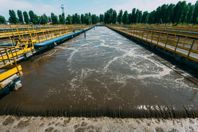WASTEWATER ANALYSIS RESOURCES
-
"Potential" is in the name. Here's what wastewater managers should know about both the benefits and challenges of ORP as an agent of process control.
-
In this white paper, learn how real-time monitoring of ammonia (NH₃) and nitrogen (N) in wastewater treatment plants (WWTPs) can be a game-changer for optimizing treatment performance and energy efficiency.
-
The U.S. PFAS analytical instrumentation market is poised for strong expansion, with a projected CAGR exceeding 20% over the next seven years, according to a new report. Key drivers in the market include rising concerns over increasing risks associated with PFAS exposure, the U.S. EPA's federal rule on drinking water, and investments to boost testing and treating PFAS in water.
-
Aided by "soft sensors," machine learning is revolutionizing monitoring and powering real-time predictions.
-
Remote wastewater services are available to monitor e-waste contamination in the global water supply. This article explains the problem, details its scope and threat, and presents devices for the monitoring of e-waste in water.
-
Hmmm … what’s new for 2025? That's asked with a hint of knowing sarcasm, as the incoming presidential administration promises to disrupt the status quo. The change in direction for environmental policy, including impacts on regulations as well as traditional and human infrastructure, has yet to fully reveal itself.
-
Remote wastewater services offer numerous benefits across various industries, enhancing cost efficiency and environmental sustainability. What follows are some real-world examples of industries utilizing these services.
-
Managing pH in wastewater treatment is a crucial undertaking for water utilities. Solid contaminants often receive more attention, as they're more obvious threats, but sub-optimal pH levels can be dangerous, too.
-
Recent improvements in remote monitoring and management technologies, particularly in the wastewater treatment sector, have revolutionized operational efficiency. Key technologies include IoT sensors, AI analytics, and cloud computing. This article explores their applications and benefits in enhancing wastewater treatment processes.
-
Read about the solution that was able to provide the Warren Water Recovery Facility with accurate composite sampling, reduced manpower with easy cleaning and maintenance, and predictive maintenance that reduced time in fixing process errors.











